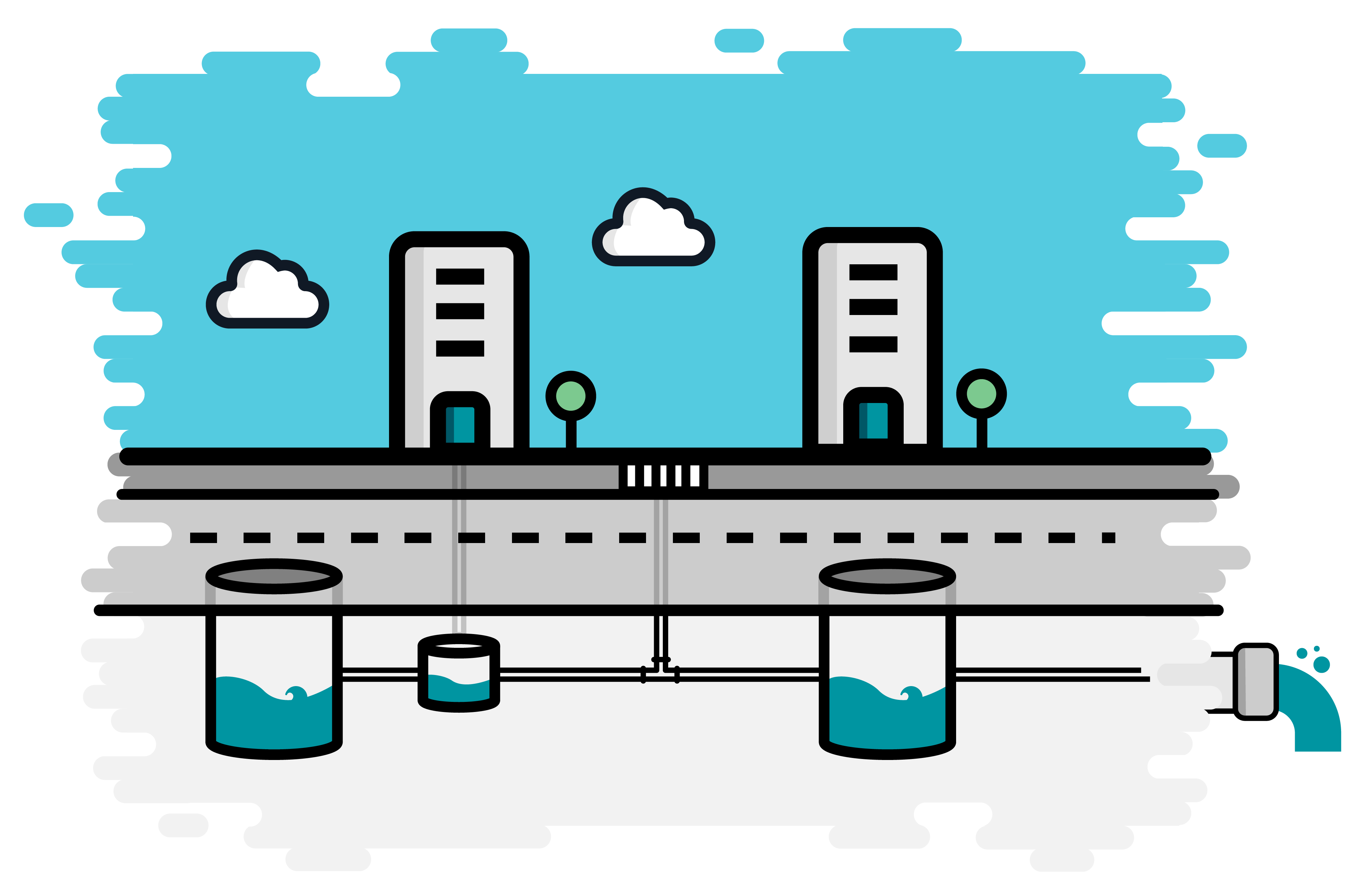
According to a study led by an investigator at the University of Lisbon, climate change plays a decisive role in modifying the hydrological cycle in the Mediterranean area. Despite a decrease in average annual rainfall, from north to south of the country, Portugal is expected to experience an increase of about 20% in days of heavy rainfall in short periods of time.
Similarly, flooding could be the main agent causing obstructions in sewage networks and wastewater treatment plants, causing the spillage of partially treated water. This scenario makes it essential to optimise not only all urban drainage systems, but also all the general bodies that comprise them, so as to minimise the risks of flooding and the consequences associated with human health, the environment and infrastructure.
Rainwater drainage systems have inlet drains upstream and along the collecting network and downstream outlet drains. As they are the transition border between systems, the correct functioning of the drainage process depends on the full functioning of these devices. Therefore, they are a fundamental part in the correct performance of the whole system, collecting and draining water.

According to the Portuguese Standard NP 676 - 1973, the sewage network is organised as follows:
- Gullies: the water enters the devices laterally. Normally, they are found in public road pavements.
- Gutters: the water enters the devices from the top, which implies the use of a grid that allows the water to enter, without harming normal road circulation. They are normally introduced in the road pavement.

SMEAP is a system that establishes data analysis on the state of the rainwater drainage network, giving those responsible for managing the rainwater network important indicators that reflect the overall performance of the entire network.

By installing IoT sensors and applying Artificial Intelligence to the data collected, it will be possible not only to monitor the entire network according to previously defined parameters, but also to anticipate a warning system in the event of obstruction, sufficiently in advance for preventive maintenance of the elements requiring intervention in the drainage network.
As a result of objects that occasionally fall into the gutters (plastic bags, packaging, etc.) and contribute to their possible obstruction, the drainage efficiency will be clearly reduced, and therefore an overflow may occur. To prevent that scenario, once the gutters' dimensions are known, the monitoring is carried out mainly at depth level, and it is possible to reach a value representing the degree of the gutter’s internal obstruction.
For this, the SMEAP uses hardware developed by Ankix, consisting of ultrasonic and luminosity sensors. The device, with compact dimensions and high energy autonomy, is able to measure the unobstructed space as well as the light conditions inside. These measurements, after treatment, allow to measure the state of the system in an isolated or global way, allowing the operator to define critical states, monitor in real time on dashboard and create alarms.
On the other hand, human action may also condition normal rainwater flow, thus causing an obstruction to the surface, such as cardboard, newspapers and product packaging. Thus, since the drainage system must always have its opening at the top in order to collect rainwater, the RMS measures the luminosity that, once it enters through its opening, will be reflected into the interior of the gutters, thus making it possible to determine the level of efficiency of the rainwater system’s protection grid work.

Ultrasound | Luminosity

Lora | Gateways

IBM IoT Platform | NodeRed

Web | Mobile



